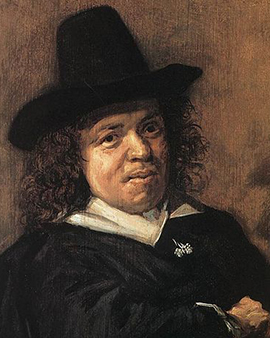In the heart of the Dutch city of Haarlem, an artist named Frans Post was born on November 17, 1612, whose distinctive painting would push the boundaries of contemporary Dutch art. Through a fascination with unexplored continents and their mysterious landscapes, Post made a name for himself by bringing the unknown into the consciousness of the European art scene. Supported and probably trained by his brother, the distinguished architect and painter Pieter Post, it was ultimately a stay in Brazil that would write Frans Post into the annals of art history.
At a young age, only 25, Post became part of an eight-year expedition led by Count Johann Moritz of Nassau-Siegen. The latter gathered a group of artists and scientists to document the recently conquered colony in northeastern Brazil. Among them was Post, who transformed his impressions into breathtaking landscape paintings. Thus was born the now famous twelve-volume book on Brazilian natural history, "Historia Naturalis Brasiliae," whose impact was enhanced by Post's illustrated works.
In this distant land, Post was inspired by nature and produced a large number of paintings based on his sketches and notes collected on site. Due to his almost photographic fidelity to illustration, his works created in Brazil have become important pictorial testimonies of this era.
Around 1641, Post continued his journey in Africa, visiting, among other places, Luanda in present-day Angola and the island of São Tomé in the Gulf of Guinea - both centers of the transatlantic slave trade at the time. Post thus had the rare privilege of getting to know both the coasts of the Atlantic and the people and cultures living there. Upon his return home in 1644, Post again demonstrated his talent as an artist. With his passion and eye for detail, he transformed his nature photographs into decorative works of art that appealed to the tastes of the Dutch public. Post thus introduced America to European painting. Post, who was known for his detailed depictions of Brazilian flora and fauna under the stunning blue skies of South America, was hailed as the "Canaletto of Brazil."
Later in his life, Post's paintings became more melancholy and his rural scenes often captured evening moods. His works were presented in prestigious exhibitions, including Basel and Tübingen (1990), the Louvre in Paris (2005) and the Haus der Kunst in Munich (2006). Today, our company gives new life to these important works by Frans Post by producing high quality art prints. In doing so, we are committed to preserving the authenticity and uniqueness of his work, while helping to bring his visionary art to a new audience.
×





.jpg)
.jpg)
.jpg)
.jpg)
.jpg)
.jpg)
.jpg)
.jpg)
.jpg)
.jpg)
_oil_on_canvas_-_(MeisterDrucke-1093015).jpg)
_oil_on_canvas_-_(MeisterDrucke-1093015).jpg)
.jpg)
.jpg)
.jpg)
.jpg)
.jpg)
.jpg)
_-_(MeisterDrucke-117670).jpg)
_-_(MeisterDrucke-117670).jpg)
.jpg)
.jpg)
.jpg)
.jpg)
.jpg)
.jpg)
.jpg)
.jpg)
.jpg)
.jpg)
.jpg)
.jpg)
_Tapestry_from_Les_Anciennes_Indes_(The_Old_Indies)_S_-_(MeisterDrucke-1328676).jpg)
_Tapestry_from_Les_Anciennes_Indes_(The_Old_Indies)_S_-_(MeisterDrucke-1328676).jpg)
.jpg)
.jpg)
.jpg)
.jpg)
.jpg)
.jpg)
.jpg)
.jpg)
.jpg)
.jpg)
_oil_on_canvas_-_(MeisterDrucke-1089346).jpg)
_oil_on_canvas_-_(MeisterDrucke-1089346).jpg)
.jpg)
.jpg)
 - (MeisterDrucke-128830).jpg)
 - (MeisterDrucke-128830).jpg)
_-_(MeisterDrucke-1371212).jpg)
_-_(MeisterDrucke-1371212).jpg)
.jpg)
.jpg)
.jpg)
.jpg)
.jpg)
.jpg)
.jpg)
.jpg)
.jpg)
.jpg)
.jpg)
.jpg)
.jpg)
.jpg)
.jpg)
.jpg)
_-_(MeisterDrucke-131424).jpg)
_-_(MeisterDrucke-131424).jpg)
.jpg)
.jpg)
 - (MeisterDrucke-142181).jpg)
 - (MeisterDrucke-142181).jpg)
.jpg)
.jpg)
.jpg)
.jpg)
.jpg)
.jpg)
.jpg)
.jpg)
.jpg)
.jpg)






